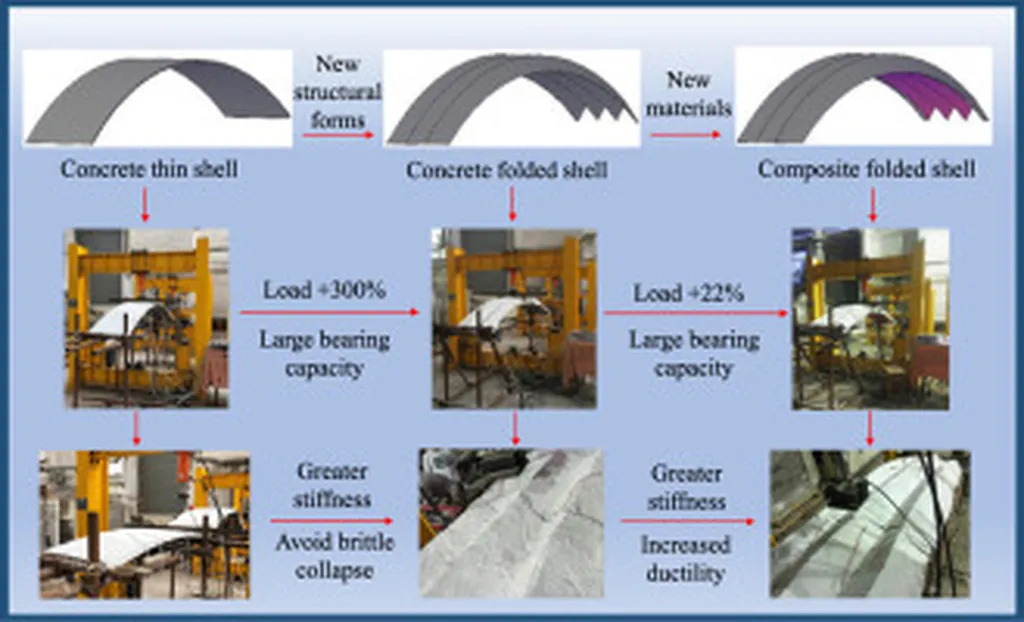In the realm of structural engineering, a groundbreaking study led by Aleksander Treshchev from Tula State University in Russia is set to redefine how we understand and predict the behavior of composite shells under load. Published in the *International Journal for Computational Civil and Structural Engineering*, Treshchev’s research delves into the deformation of thin, flat shells made of composite and polymer materials, pushing the boundaries of traditional plasticity theories.
The study focuses on shells with positive Gaussian curvature and rectangular contours, subjected to transverse loads. Treshchev’s model is unique as it accounts for both elastic and plastic stages of material deformation, a critical factor often overlooked in conventional models. “Traditional theories of plasticity lead to significant errors in determining the states and ultimate loads for shallow shells,” Treshchev asserts, highlighting the necessity for more accurate models.
One of the standout features of Treshchev’s model is its consideration of dilatation and the dependence of yield strength on the type of stress state. This is particularly relevant for materials like polymethyl methacrylate, which exhibit ideal plasticity without hardening. The model employs two plasticity conditions specifically developed for isotropic composites, one proposed by E.V. Lomakin and the other by Treshchev himself. The study also compares these with the classical von Mises plasticity condition, providing a comprehensive analysis of their effectiveness.
The implications of this research are far-reaching, especially for the energy sector. Composite shells are widely used in various energy infrastructure projects, from wind turbine blades to storage tanks and pipelines. Accurate prediction of their deformation and failure points is crucial for ensuring safety and efficiency. Treshchev’s model offers a more precise tool for engineers, enabling better design and risk assessment.
“For quantitative and qualitative comparison of the results obtained, calculations were carried out using three variants of plasticity conditions,” Treshchev explains. This meticulous approach ensures that the model is robust and reliable, capable of handling the complexities of real-world applications.
The study also provides practical insights, such as the values of loads at which plasticity first develops and the ultimate loads corresponding to the formation of plastic hinges. These findings are presented in tabular form, making them easily accessible for engineers and researchers.
As the energy sector continues to evolve, the demand for advanced materials and structures that can withstand extreme conditions grows. Treshchev’s research is a significant step forward in this direction, offering a more accurate and reliable method for predicting the behavior of composite shells. This could lead to safer, more efficient energy infrastructure, ultimately benefiting both industry and consumers.
In the words of Treshchev, “Considering the obvious advantages for the calculation of such structures, it is advisable to apply the plasticity conditions proposed by the author.” This research not only advances our understanding of material behavior but also paves the way for future developments in structural engineering, particularly in the energy sector.

